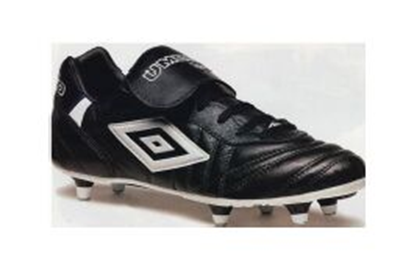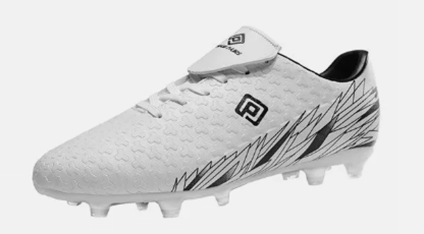In Iconix Luxembourg Holdings SARL v Dream Pairs Europe Inc & Anor [2025] UKSC 25 the Supreme Court has unanimously allowed an appeal against the Court of Appeal's decision ([2024] EWCA Civ 29) to overturn the High Court's decision ([2023] EWHC 706 (Ch)) rejecting Iconix's trade mark infringement claims relating to the “double diamond" Umbro logo.
Iconix is the registered proprietor of two registered trade marks for the “double diamond” Umbro logo (pictured below) which has been used on football boots in the UK since the late 1980's (the Umbro Marks).

From 2018 onwards, Dream Pairs sold a range of footwear branded with a logo (the DP Sign, pictured below) in the UK, via Amazon and eBay.

Iconix sued Dream Pairs for trade mark infringement alleging that the DP Sign was similar to the Umbro Marks such that its use on footwear was likely to cause confusion on the part of the public contrary to s.10(2) Trade Marks Act 1994.
At first instance the High Court rejected Iconix's claim on the basis that there was a very low degree of similarity between the Umbro Marks and the DP Sign, and no likelihood of confusion. The Court of Appeal overturned the High Court's decision finding that that there was (a) "a moderately high level of similarity” between the marks in a post-sale context, especially when the DP Sign was viewed on a football boot being worn at a game; and (b) there was a likelihood of post-sale confusion on the part of a significant proportion of consumers.


Dream Pairs appealed to the Supreme Court arguing that there was no basis for the Court of Appeal to interfere with the High Court's findings at first instance and that the Court of Appeal had made several errors of principle when re-assessing the similarity of the marks and the likelihood of confusion.
The Supreme Court's judgment addresses two foundational elements of trade mark infringement: (a) the approach the court should take when assessing whether trade marks are similar; and (b) the point in time when the alleged confusion of consumers is to be assessed.
A more detailed analysis of the Supreme Court's judgment will follow this rapid reaction piece, but for now, the headline points from the Supreme Court's decision can be summarised as follows:
(1) when assessing the similarity of a sign and a trade mark, it is permissible for the court to consider realistic and representative post-sale circumstances, such as realistic views of the marks in the post-sale environment;
(2) a likelihood of confusion does not require confusion at the point of sale; post-sale confusion is sufficient and for an actionable infringement it is not necessary to establish that post-sale confusion adversely affects the origin function of the mark at the point of a subsequent sale or in a subsequent transactional context; and
(3) actionable post-sale confusion does not require some form of damage at the point of sale or in a transactional context, in the sense of influencing consumers when they make a choice with respect to the goods or services in question.
The Supreme Court rejected Dream Pairs' appeal based on the Court of Appeal's assessment of the post-sale circumstances and finding of post-sale confusion. However, the Court did allow Dream Paris' appeal on the basis that the were no grounds for the Court of Appeal to interfere with the High Court's decision because the trial judge's analysis was not irrational and did not involve any error of law or principle.
The Supreme Court's decision provides helpful clarity on the relevance of post-sale circumstances to assessing the similarity of trade marks and reaffirms that post-sale confusion is a standalone form of actionable confusion. Look out for a more detailed analysis of the Supreme Court’s judgment in the coming days.

/Passle/5f3d6e345354880e28b1fb63/MediaLibrary/Images/2025-09-29-13-48-10-128-68da8e1af6347a2c4b96de4e.png)
/Passle/5f3d6e345354880e28b1fb63/SearchServiceImages/2025-12-02-15-57-05-627-692f0c51cb7c9dfade93b1f8.jpg)
/Passle/5f3d6e345354880e28b1fb63/SearchServiceImages/2025-12-01-15-44-32-174-692db7e0931c2ebece138787.jpg)
/Passle/5f3d6e345354880e28b1fb63/MediaLibrary/Images/2025-12-01-13-39-37-469-692d9a996334e402b70808aa.png)